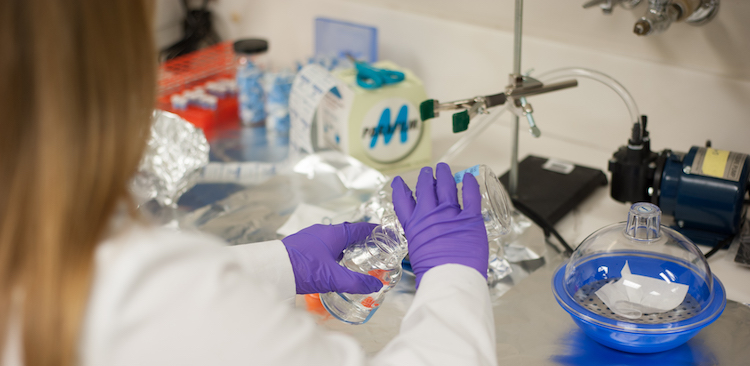
ONGOING RESEARCH PROJECTS
Biomimetic Materials
The Baio lab works to understand nature’s unique ability to self-assemble biological materials and find ways to mimic these processes to produce new materials. This work includes basic science, such as characterizing natural biological adhesives, and applied technologies, such as engineering non-fouling coatings for biomedical applications.
One current project includes identifying and mimicking the lubricating biomolecules found on the bellies of snakes that enable them to slide on a wide variety of substrates. Snake skin is a highly functional biological material that possesses impressive mechanical, optical, and chemical properties. While biologists and engineers have set out to understand this material, previous studies have largely ignored the chemical properties at the scale surface. This knowledge will be critical to engineering new materials that fully mimic the properties of snake skin.
Methods to Probe the Structure of Membrane Proteins
One of the Baio lab’s long-term goals is to establish the chemical principles that dictate how key membrane proteins interact with biological membranes. A key challenge is that membrane proteins typically denature when not interacting with lipids. Previous efforts to produce lipid-protein crystals have had limited success at best. As a result, of the more than 100,000 protein structures published and uploaded to the Protein Data Bank, only a small proportion (~0.2%) of those where a protein is bound to a lipid interface have been addressed.
The Baio group is investigating methods to provide this data. One technique that has the potential to provide molecular-level information about membrane proteins interacting with biological interfaces, without the necessity to form protein crystals, is sum frequency generation (SFG) vibrational spectroscopy.